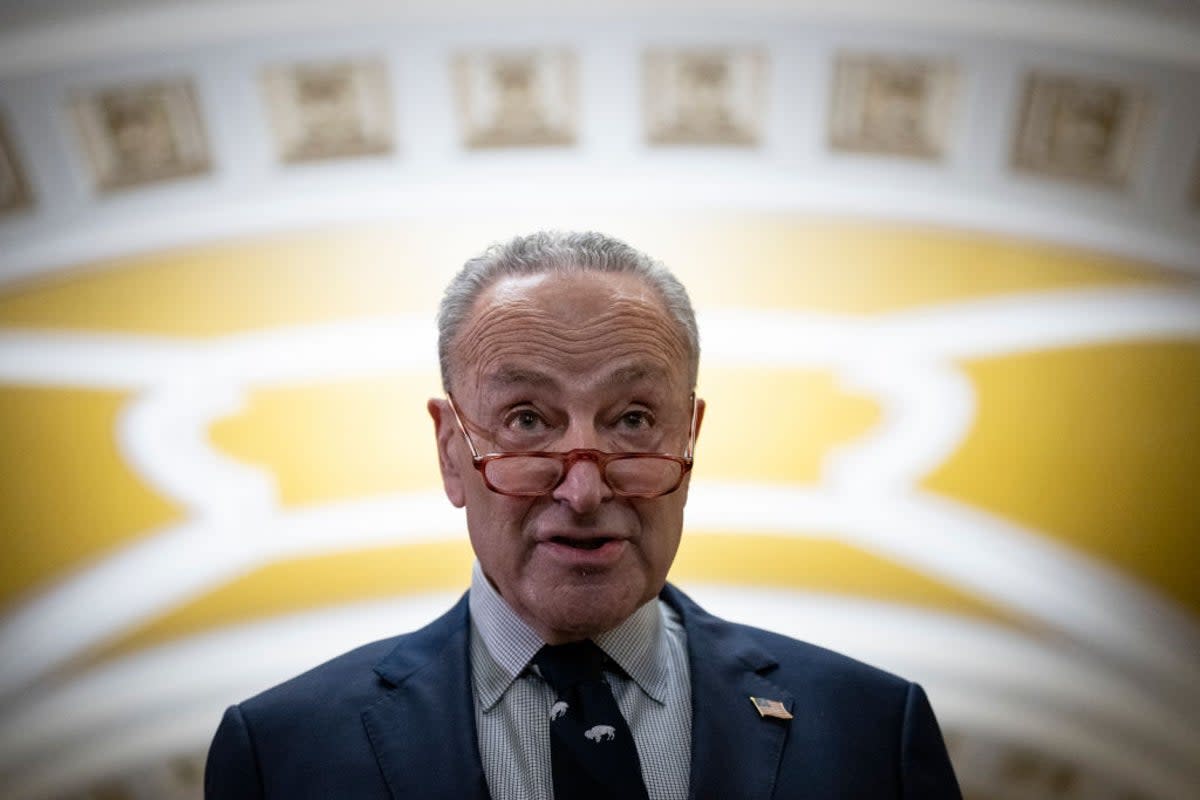Senior Democrats hand back Silicon Valley Bank donations following bank’s collapse

Top Democrats in Congress are vowing to return campaign contributions tied to Silicon Valley Bank (SVB), the tech industry lender which failed last week after a bank run and was temporarily taken over by federal legislators.
Senate Majority Leader Chuck Schumer of New York is giving away $5,800 from former SVB CEO Greg Becker and $2,700 from the bank’s political action committee, the Democrat’s office told The Hill.
The money will be sent to New York-based charities, CNBC reports.
Representative Maxine Waters of California is also giving away money tied to the bank, returning $2,500 from its PAC, according to Politico.
Between 2017 and 2022, the bank gave over $50,000 to Republicans and Democrats serving on finance-related committees, according to the site.
The demise of SVB, which is now being overseen by federal regulators, is the biggest bank failure since 2008, and has had far-reaching ripples among its core consumer base, the tech industry of the San Francisco Bay Area.
Since its founding in 1983, the bank was a pioneer of lending to startups, and soon came to be a key institution for related venture capital firms as well as wealthy individuals in the tech world, according to NPR.
"These guys have been around for a long time, they’re a huge institution in Silicon Valley,"Andrew Metrick of the Yale School of Management told the station. "They’re basically as old as the organized venture capital community out there."
As of 31 December, the bank held $209bn in assets and $175bn in deposits, according to state regulators.
Things turned sour quickly for the four-decades-old bank. Throughout the pandemic, it bought relatively low-risk, dependable assets like US Treasurys and government-backed mortgage bonds, only to see those fixed investments turn into a problem when federal regulators raised interest rates, putting SVB at risk of $17bn in potential losses, the Wall Street Journal reports.
Numerous companies and individuals raced to pull their money out of the bank last week, after SVB announced a capital raise campaign and the sale of some of its securities at a loss. The bank failed when it failed to secure the capital needed to meet the $42bn in sudden deposit request, according to the Journal.
Normally, FDIC insurance only extends to depositors holding $250,000 or less at a given bank, but federal officials announced last weekend that depositors with larger amounts held at SVB would still have access to their funds, under a “systemic risk exception” payment programme.
Some banking experts have argued that the Trump administration’s rolling bank of regional banking regulations passed in the wake of the 2008 financial crisis had a hand in the collapse of SVB.
The federal intervention in the bank is not quite a full bailout, according to experts, as those who invested stock in SVB will not be made whole, but the move from regulators has been criticised for giving undue support to an institution that serviced the wealthy and higher-risk business ventures.
“The Fed has basically just written insurance on interest-rate risk for the whole banking system,” Steven Kelly at Yale’s program on financial stability told The New York Times, suggesting the intervention could set a precedent that lets other banks engage in risky behaviour because they believe the Fed will step in and help if things go awry.
“I’ll call it a bailout of the system,” he added. “It lowers the threshold for the expectation of where emergency steps kick in.”
The auction process for the troubled bank could begin within a matter of days, Axios reports.

